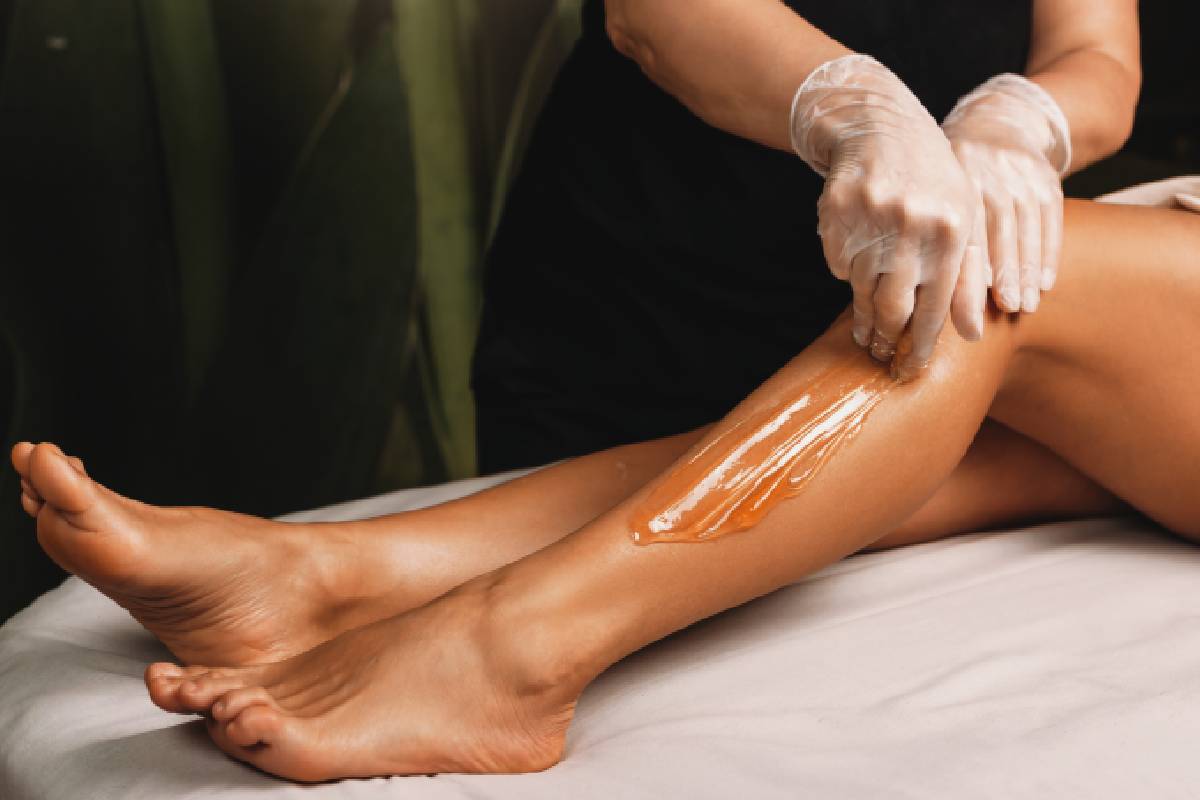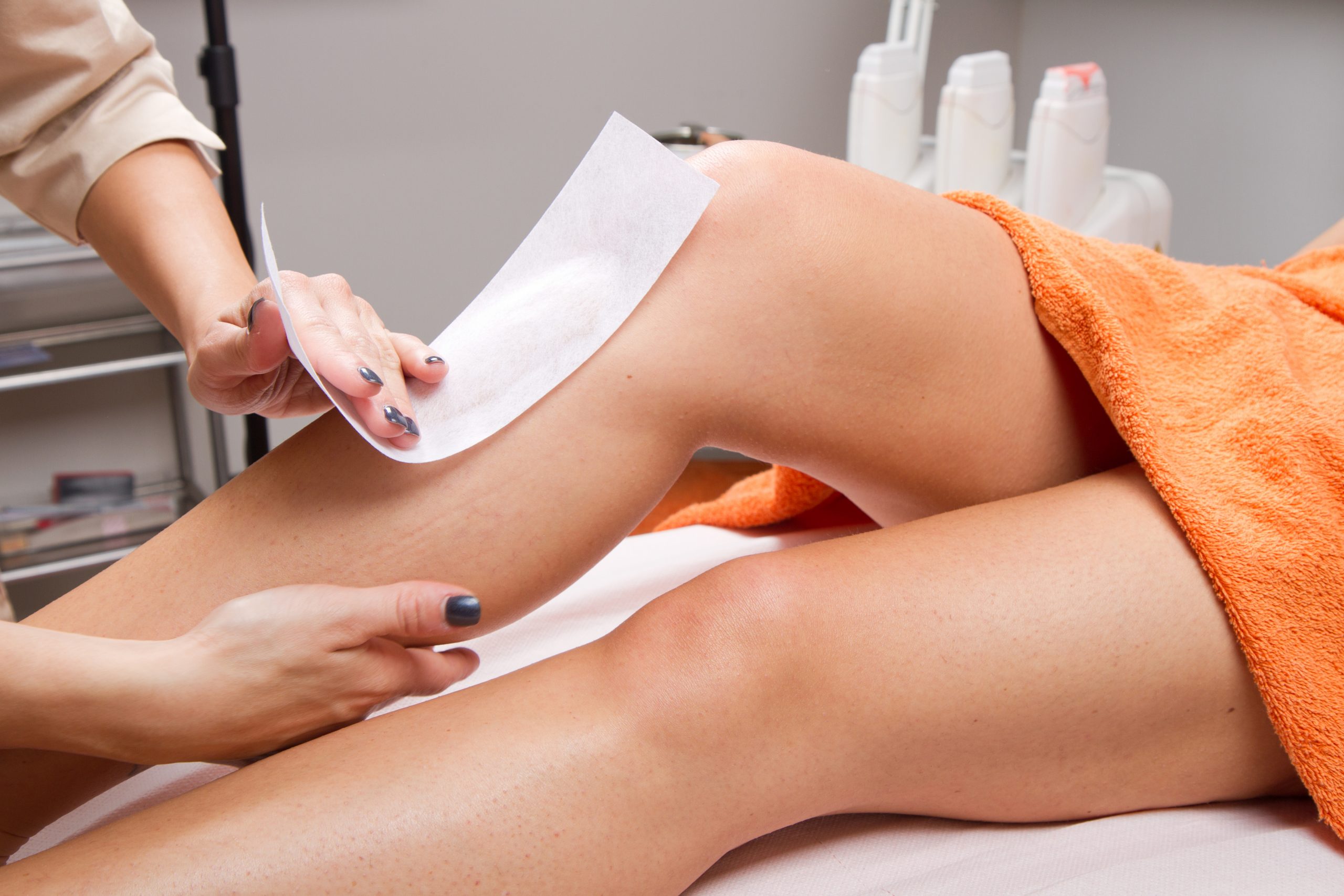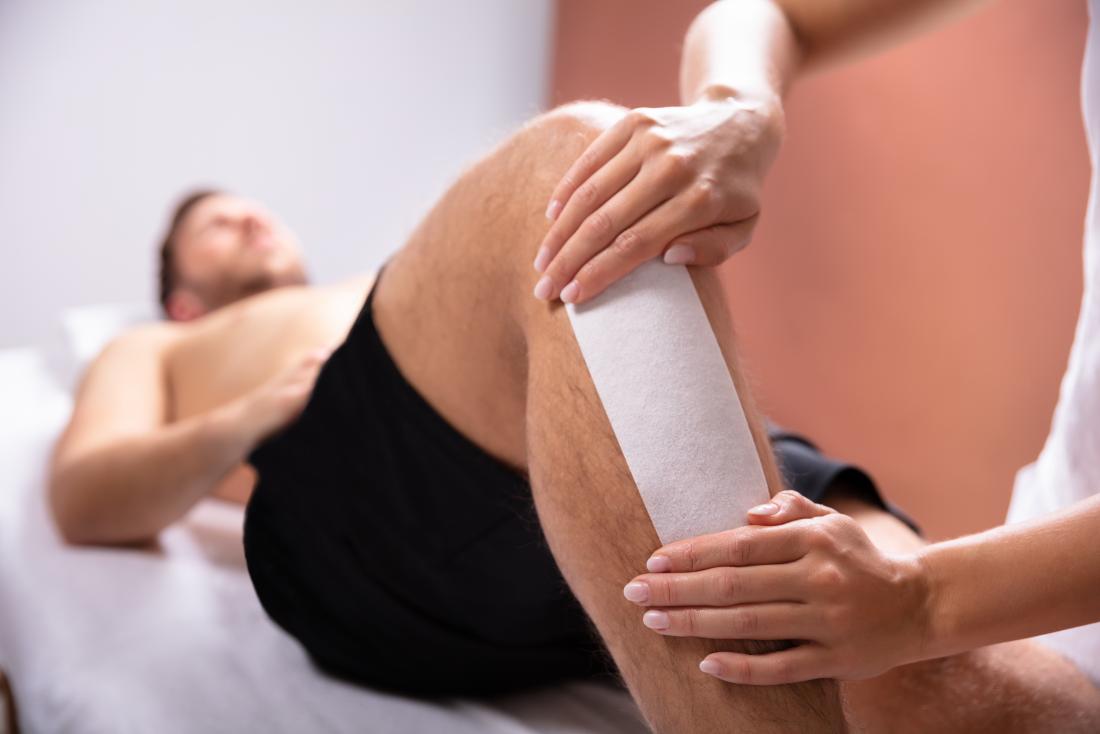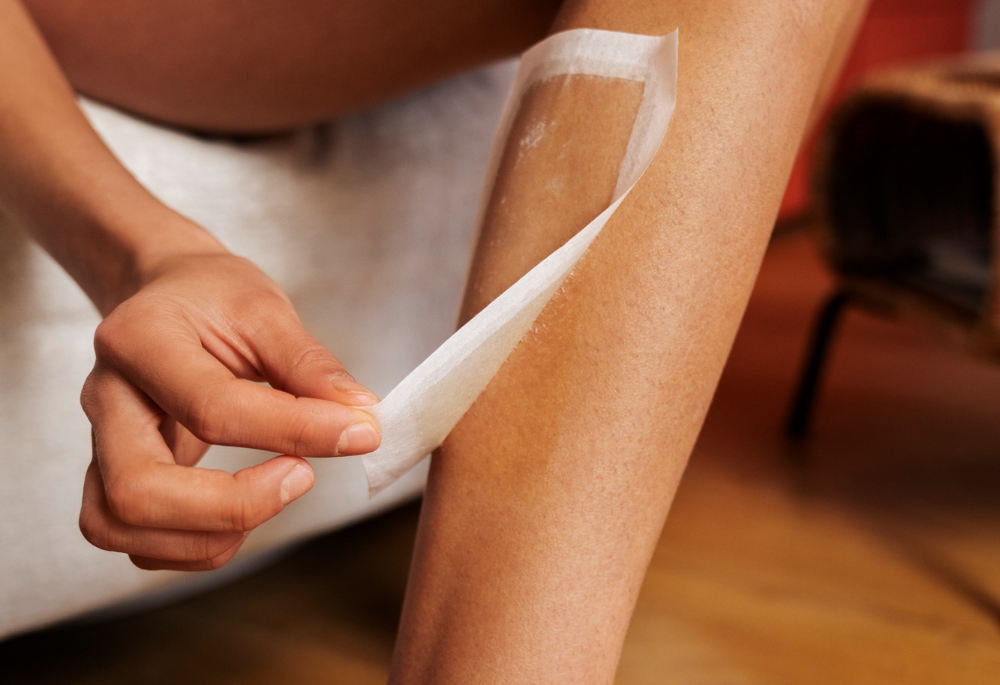
When it comes to getting rid of unwanted hair, people often explore different methods like shaving, creams, or laser treatments. Among these options, body waxing Aurora has become a popular choice for those looking for smoother skin that lasts longer. Unlike shaving, which only cuts hair at the surface, waxing removes hair from the root, giving you weeks of silky results and making it one of the most reliable long-lasting hair removal methods.
What Makes Body Waxing Different from Shaving?

Shaving vs. Waxing: Surface-Level Removal vs. Root Removal
-
Shaving: When you shave, the razor slices the hair shaft right at the surface of the skin. This gives instant smoothness, but it doesn’t affect the root. Because the hair is still intact beneath the skin, regrowth happens quickly—usually within one to three days. The new hair often feels coarse and stubbly, which can be frustrating if you want long-lasting results.
-
Waxing: In contrast, waxing pulls the entire hair out from the follicle. Since the root is removed, it takes significantly longer for new hair to grow back. Depending on your hair type and growth cycle, you can enjoy smooth skin for three to six weeks. This is why many people see waxing as a worthwhile option for vacations, events, or simply for a lower-maintenance grooming routine.
Growth Cycle Impact: Why Waxing Slows Down Regrowth
Hair growth follows a natural cycle that includes three stages: anagen (growth), catagen (transition), and telogen (resting). Shaving doesn’t disrupt this cycle; it simply trims the hair that has already grown above the skin. That’s why stubble reappears so quickly.
Waxing, however, changes the equation. By removing the hair from its root, it forces the follicle to start producing new hair all over again, essentially resetting the cycle. Over time and with regular waxing, the follicles may become weaker, leading to finer, lighter, and less noticeable regrowth. Many people find that after a few consistent sessions, the need for frequent hair removal decreases dramatically.
Additional Advantage: Smoother Skin Without Irritation
Shaving can sometimes cause razor burns, cuts, or ingrown hairs. Waxing, when done professionally, reduces these risks and also acts like a light exfoliation by removing dead skin cells along with the hair. This leaves the skin not only hair-free but also softer and more radiant.
How Does Body Waxing Work?

The Process of Body Waxing
The process of waxing is simple but highly effective:
-
Preparation of the skin – The area to be waxed is cleansed and sometimes lightly exfoliated to ensure the wax sticks properly and minimizes the risk of ingrown hairs.
-
Application of wax – Depending on the method, either warm or cold wax is applied in the direction of hair growth.
-
Adhesion – The wax adheres tightly to both the hair and the top layer of dead skin cells.
-
Removal – A strip is quickly pulled off in the opposite direction of hair growth, uprooting the hair from the follicle.
This technique ensures that hair is removed at the deepest level possible, leaving the skin smoother than what you’d get from shaving or depilatory creams.
Why Root Removal Delays Regrowth
The main reason waxing is considered long-lasting is that it targets the root of the hair follicle. When the hair is pulled out completely:
-
The follicle has to regenerate a new strand from scratch.
-
This regrowth process is slower compared to shaving, where the root remains intact.
-
New hair often grows back softer and thinner over time, making future waxing sessions easier and less painful.
On average, waxing keeps skin smooth for 3–6 weeks, depending on the individual’s hair type, texture, and growth rate.
Warm Wax vs. Cold Wax – What’s the Difference?
-
Warm Wax: Softens the hair and opens up the pores, making it easier to remove even the shortest or finest hairs. Often used for larger areas like legs, arms, or back.
-
Cold Wax: Usually applied via pre-coated strips, it’s quick and convenient but may not grip very short hairs as effectively as warm wax. Best for small areas or touch-ups.
Both methods are effective, but warm waxing is generally favored for professional treatments, while cold strips are popular for at-home use.
Bonus Benefit: Exfoliation Alongside Hair Removal
Because waxing pulls away dead skin cells along with the hair, it acts like a gentle exfoliation. This not only leaves the skin soft and radiant but also helps prevent clogged pores and ingrown hairs that are common with shaving.
Benefits of Waxing for Long-Lasting Results

Slower Regrowth Cycle
One of the biggest advantages of waxing is how it slows down the hair regrowth process.
-
Lasting Smoothness (3–6 weeks): Since waxing removes the hair from the follicle, it takes much longer for the body to produce new hair. Most people experience smooth skin for three to six weeks, depending on their natural growth rate.
-
Weakened Hair Follicles Over Time: With consistent waxing, hair follicles can become weaker. This means that over several sessions, regrowth not only slows down but may even reduce in density, leading to fewer hairs overall.
This makes waxing an ideal choice for people who want to spend less time worrying about frequent touch-ups.
Finer and Softer Regrowth
Another noticeable benefit of waxing is how the hair grows back differently than after shaving.
-
Thinner Strands: Because waxing pulls the entire hair out, new strands grow back finer rather than thick and coarse.
-
Softer Texture: Unlike shaving, which leaves behind sharp-edged stubble, regrown waxed hair feels softer and less noticeable to the touch.
-
Reduced Visibility: Over time, many people find that regrown hair is much less visible, making the skin appear smoother and cleaner even between sessions.
This is especially beneficial in areas like the arms, legs, and face, where coarse hair can be more noticeable.
Exfoliation Effect
Waxing does more than just remove unwanted hair—it also improves skin texture.
-
Dead Skin Removal: As the wax strips away hair, it also lifts away a layer of dead skin cells. This acts as a natural exfoliation, leaving the skin smoother and brighter.
-
Reduced Ingrown Hairs: Proper exfoliation helps prevent clogged pores, which in turn reduces the chances of painful ingrown hairs.
-
Healthy, Radiant Skin: With regular waxing, many people notice an overall improvement in skin softness and appearance, as the combination of hair removal and exfoliation promotes skin renewal.
Is Body Waxing Really Painful?

The Sensation
-
Quick and Sharp, Not Lingering: The pain from waxing is usually a quick sting that fades within seconds. It is not a lasting pain, but more of a momentary discomfort.
-
Varies by Area: Sensitive areas like the bikini line or underarms may feel more uncomfortable compared to the legs or arms, which typically have thicker skin and are easier to wax.
-
Personal Threshold: Everyone’s pain tolerance is different, so the experience can vary from person to person.
Why Pain Reduces with Regular Sessions
The good news is that waxing becomes easier and less painful over time:
-
Weaker Hair Follicles: With each session, the follicles weaken, making it easier to remove hair with less resistance.
-
Finer Regrowth: The new hair that grows back tends to be thinner and softer, which means it hurts less to remove compared to coarse hair.
-
Skin Adjustment: Your skin also adapts to the process, reducing sensitivity after a few sessions.
Many people find that after two or three consistent waxes, the discomfort is significantly reduced, making it a routine they can maintain comfortably.
Tips to Minimize Discomfort
-
Exfoliate Beforehand: Removing dead skin helps the wax grip hair better and prevents tugging.
-
Avoid Shaving Between Sessions: Shaving makes hair grow back coarser, which can increase pain during the next wax.
-
Choose a Professional: Experienced estheticians use proper techniques to minimize pain and protect your skin.
-
Time Your Session Wisely: Some people find that waxing is more comfortable a few days after their menstrual cycle, when skin sensitivity is lower.
Alternatives to Waxing – How Do They Compare?

Shaving
-
How It Works: A razor cuts hair at the skin’s surface.
-
Pros: Quick, painless, inexpensive, and can be done at home anytime.
-
Cons: Results last only 1–3 days; hair grows back coarse and stubbly; risk of cuts, razor burn, and ingrown hairs.
Compared to waxing, shaving requires much more frequent upkeep and doesn’t provide the same smooth finish.
Depilatory Creams
-
How They Work: These creams use chemicals to dissolve hair just below the skin’s surface.
-
Pros: Easy to use at home, painless, and inexpensive.
-
Cons: Results last less than a week; strong chemical smell; risk of skin irritation, especially for sensitive skin.
While depilatory creams may be convenient, they don’t compare to the weeks of smoothness achieved with waxing.
Laser Hair Removal
-
How It Works: Concentrated light beams target and damage hair follicles, reducing growth over time.
-
Pros: Long-term reduction of hair; may lead to permanent results after multiple sessions.
-
Cons: High cost; requires several sessions; works best on people with light skin and dark hair; may cause temporary redness or irritation.
Laser hair removal is effective but not always accessible due to cost and suitability limitations. Waxing offers a more affordable way to achieve long-lasting smoothness without a big investment.
Why Waxing Remains the Cost-Effective, Long-Lasting Choice
Waxing strikes the perfect balance between affordability, effectiveness, and convenience:
-
Provides smooth results that last 3–6 weeks.
-
Weakens hair over time, leading to finer regrowth.
-
Works on all skin tones and hair types.
-
Costs less than professional laser treatments and delivers better longevity than shaving or creams.
For many, waxing is the sweet spot between budget-friendly and long-lasting hair removal—making it a reliable option for both routine grooming and special occasions.
Conclusion
Body waxing stands out as one of the most effective methods for achieving long-lasting smoothness. Unlike shaving or creams that only remove hair at the surface, waxing targets the root, delaying regrowth for up to six weeks. With regular sessions, hair becomes finer, softer, and less noticeable, while the skin benefits from natural exfoliation and improved texture. For those seeking a balance between cost-effectiveness and lasting results, waxing is a clear winner. It not only saves time in your beauty routine but also boosts confidence by keeping your skin smooth and radiant for longer periods.
FAQs
1. How long does body waxing last?
Most people enjoy smooth skin for 3 to 6 weeks after waxing. The exact duration depends on individual hair growth cycles, but waxing lasts much longer than shaving or depilatory creams.
2. Does body waxing make hair grow back thicker?
No. In fact, regular waxing often leads to finer, softer regrowth. Since hair is pulled from the root, new hair usually appears less coarse compared to the blunt stubble left by shaving.
3. Is waxing painful?
Waxing does involve some discomfort, as hair is removed from the root. However, the pain is quick and temporary, and it becomes less intense with regular sessions as hair grows back finer.
4. Is waxing better than shaving?
Yes, waxing provides longer-lasting results (weeks instead of days) and smoother skin, without the cuts, razor burn, or stubble associated with shaving. Over time, waxing also weakens hair follicles, making regrowth easier to manage.
5. Can I do body waxing at home, or should I go to a professional?
While at-home kits are available, professional waxing is recommended for the best results. Trained estheticians use proper techniques to minimize pain, reduce the risk of ingrown hairs, and ensure a cleaner, smoother finish.

